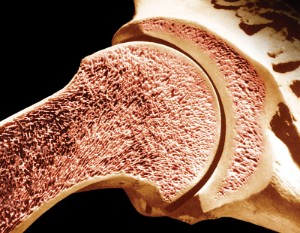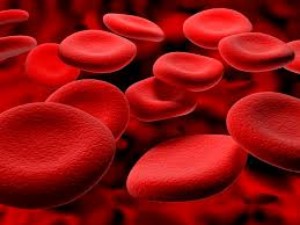How alcohol affects the human nervous system — 5 long-term effects of its exposure
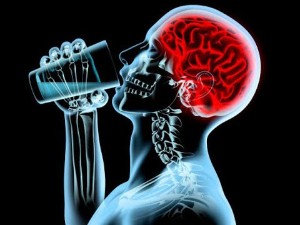 When talking about the harm of alcohol to humans, its harmful effects on the stomach, liver, and cardiovascular system are most often mentioned. However, our nervous system is the first to take the hit. The initial symptoms of even mild intoxication: the spread of pleasant warmth through the body, relaxation, blurred vision – in fact, there are nothing more than signals of violations in her work.
When talking about the harm of alcohol to humans, its harmful effects on the stomach, liver, and cardiovascular system are most often mentioned. However, our nervous system is the first to take the hit. The initial symptoms of even mild intoxication: the spread of pleasant warmth through the body, relaxation, blurred vision – in fact, there are nothing more than signals of violations in her work.
Household alcoholism – in the form of weekly Friday celebrations of the "end of the working week", birthdays, anniversaries, and other celebrations, which is usually treated condescendingly, is in fact a long-term trap, and its victims are, first of all, the cognitive functions of the human brain, which confirmed by research .
In this article, we will describe the short- and long-term effects of alcoholic beverages on the human nervous system, as well as discuss the timing and methods of recovery.
Recall that in the last article we reviewed 20 most beneficial foods for the brain .
Content
The role of the nervous system
Touching a red-hot iron, we will instantly withdraw our hand even blindfolded. The signal of external irritation along the chain of neural connections reached the corresponding brain center in a fraction of a second, followed by a reverse command to the muscles, which withdrew their hand. At the same time, we ourselves may not have had time to realize what caused the feeling of "hotness".
The magical power of nature has endowed every living being, from jellyfish and polyps to vertebrates, with amazing a mechanism for regulating interaction with the outside world , as well as the regulation of their own physiological processes by the nervous system.
The mechanism of the NS operation
In both the simplest and more advanced creatures, the functions of the nervous system are based on the coordinated work of neurons – excitable cells that are able to generate and transmit electrical impulses through the membranes of living cells.
Their structure is universal : differing in shape and size, they always consist of appendages of different lengths and with the same functions: axons and dendrites (the latter may not exist). One, two or more dendrites send an initial impulse into the body of a neuron, and from there an electric wave is transmitted either to another neuron or to muscle or glandular cells along a single axon &8212; a longer process &8212;.

In the example in the iron, a signal about the danger of a burn was transmitted by the dendrite, the endings of which are located in the finger of the hand, to a neuron localized in one of the upper parts of the spinal cord; from there, a signal immediately followed through the axon to the muscles of the arm, which saved it from severe burn.
Higher nervous activity
If in the spinal cord of humans and vertebrates there are control centers for the communication of the body with the outside world and the work of internal organs, then the brain of the most advanced creatures is responsible for other complex functions . They are vision and hearing, memory, communication, and finally, thinking, conscious articulate speech, and creativity inherent only to one person.
At the physiological level, the mechanism of all these processes also takes place through the excitation of neural cells. It is these priceless molecular compounds that a person voluntarily puts in mortal danger when he drinks even the most harmless glass of champagne.
What happens when you get drunk?
When talking about alcohol intoxication, they mean intoxication with a certain percentage of ethanol in the blood and brain.
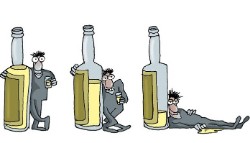 Intoxicating concentrations occur when drinking alcoholic beverages, but even without this, microscopic doses of ethanol are found in the human body, and take an important part in metabolism. The required amount of this metabolite also comes from food.
Intoxicating concentrations occur when drinking alcoholic beverages, but even without this, microscopic doses of ethanol are found in the human body, and take an important part in metabolism. The required amount of this metabolite also comes from food.
It is significant that the metabolism of ethanol itself occurs in the liver – which is why people with alcohol dependence often suffer from cirrhosis of the liver. An important role in the oxidation of ethanol is played by the enzyme alcohol dehydrogenase: first, ethanol passes into acetaldehyde, followed by conversion to acetate. This is followed by a complex chain of chemical reactions, up to the Krebs cycle, during which acetyl residues are oxidized to carbon dioxide.
Why does the brain suffer the most?
 For ethyl alcohol, it is inherent mainly to accumulate in those organs to which the blood flow is strongest and which contain the largest amount of fluid. It is in the blood and neural cells that there is a lot of fluid. This is the reason for the harmful effect that alcohol has on the activity of the higher nervous system.
For ethyl alcohol, it is inherent mainly to accumulate in those organs to which the blood flow is strongest and which contain the largest amount of fluid. It is in the blood and neural cells that there is a lot of fluid. This is the reason for the harmful effect that alcohol has on the activity of the higher nervous system.
For comparison, here are the percentages of alcohol exposure to other organs:
- Liver, kidneys – 1.45% of the total dose taken;
- Spinal cord – 1.5 %;
- Brain – 1.75%.
The brain, like all other organs, must be constantly replenished with new cells throughout life. In case of constant presence of algol toxins this process slows down and then almost stops &8212; while the old ones are dying off with even greater intensity. As a result, early physical and moral aging of a person occurs:
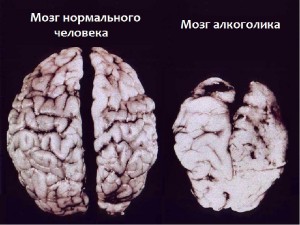
- Loss of external attractiveness;
- Early aging and roughening of the skin;
- Weakening and gradual death of cognitive abilities long before the onset of physiological old age.
The physical volume of the brain decreases over time . The convolutions of the brain are smoothed out, their number and length are reduced. Instead, scarring occurs due to frequent micro-hemorrhages.
The cause of hemorrhages &8212; in severe vasoconstrictive effects of ethanol . However, in a frenzy, mini-strokes, as a rule, go unnoticed, without proper diagnosis and treatment. Their effect on the atrophy of brain functions is intertwined with the consequences of disruption of the central nervous system, as a result of which a person has a whole bunch of diseases, the exact nature of which is difficult to track.
Short—term consequences - 6 facts
Ethanol is essential for metabolic processes, along with proteins, carbohydrates and fats. It is significant that the percentage of this alcohol in the total amount of food calories in a person who does not abuse alcohol is about 12%. According to its energy value , it is placed between fats and carbohydrates . So why does the effect of alcohol depress and destroy the nervous system?
 Danger comes with overdoses , and they occur with the intake of any ethanol-containing beverage. If the concentration of ethanol in the blood is higher than normal, the enzyme alcohol dehydrogenase is no longer sufficient for its oxidation, and therefore acetaldehyde accumulates in the body, the toxicity of which exceeds the toxicity of ethanol itself by tens of times.
Danger comes with overdoses , and they occur with the intake of any ethanol-containing beverage. If the concentration of ethanol in the blood is higher than normal, the enzyme alcohol dehydrogenase is no longer sufficient for its oxidation, and therefore acetaldehyde accumulates in the body, the toxicity of which exceeds the toxicity of ethanol itself by tens of times.
Thus, poisoning of the body's cells occurs immediately after the first glass, and only increases with each subsequent one. Neurons receive the first blow of alcohol intoxication on themselves and transmit danger signals to all organs.
The degree of damage to nerve cells depends on the amount of alcohol consumed, which can be briefly described as follows:
- Ethanol content 0.04-0.05% in blood plasma: the cerebral cortex stops working. Its soft membranes are absolutely unable to resist the penetration of poison. The functions of communication with the outside world are transferred to the lower departments: there is a demoralization of thoughts and actions, the disabling of the deterrent factor; a person can say or do something that he would never have allowed himself in a sober state.
- At 0.1% deep parts of the brain are poisoned (coordination of speech and movement is disrupted, double vision occurs, extraneous sounds appear, gait becomes shaky, the drunk may fall);
- 0,2% - due to a malfunction of the frontal lobes, the coordination of feelings, emotions and related actions is disrupted (excessive resentment, tearfulness, aggressiveness of a drunk person are associated with this stage);
- 0,3% - the so-called "alcoholic stupor" &8212; a person ceases to react externally to the environment;
- 0,4% - the threshold of being conscious;
- From 0.5 % &8212; the possibility of a fatal outcome.
Some researchers divide the process of intoxication into 3 main stages. You can see them in the picture:
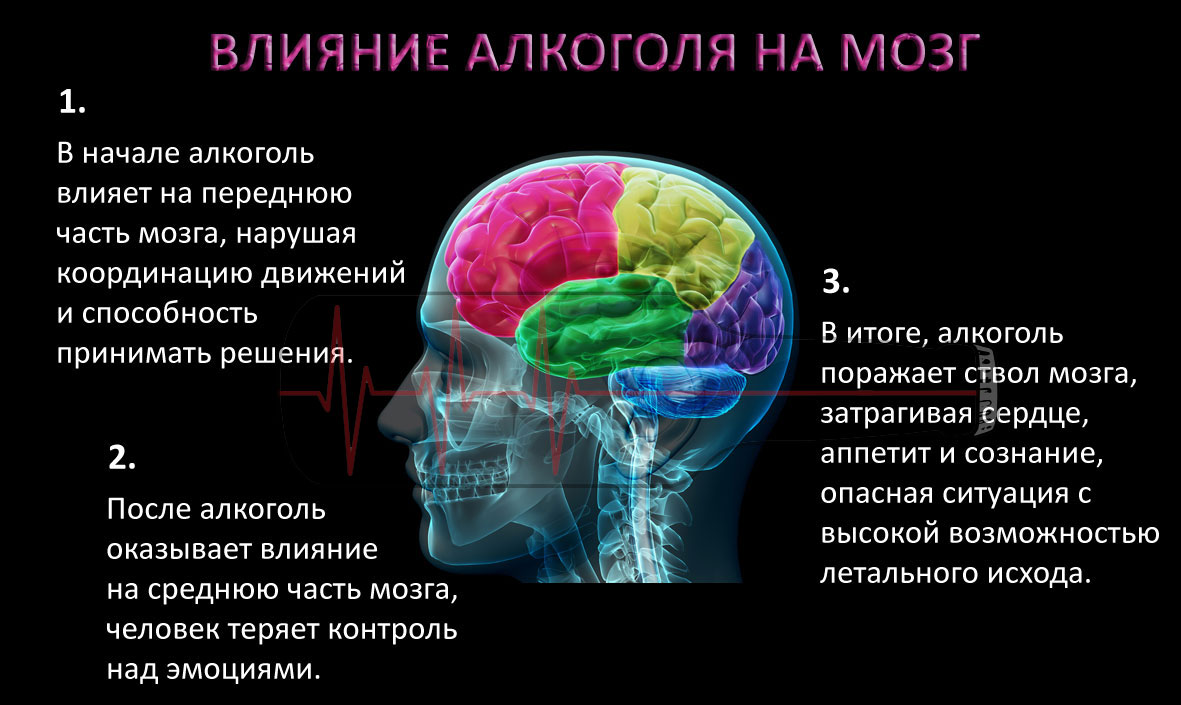
Fans regularly "relax" try to limit themselves at first to the first stage – to mild intoxication, but this is how they become addicted to alcohol. The fact is that with increased intake of ethanol from the outside, the body stops its independent production. As a result, an important antioxidant function is not performed, both in the blood and in the brain toxins are accumulating , which do not allow a person to relax and calm down without an additional "percentage".
The failure of the nervous system to fulfill its primary task &8212; self-preservation &8212; confirms the fact that often drunk people can drown or burn alive, and even commit suicide.
Long—term consequences - the 5 most dangerous
The tradition of relieving stress by "degrees" on weekends is aggravated by vacations and holidays. Academician Pavlov found out that the alcoholic poison remains in the cell for up to two weeks. Even more – up to 23 days – is required by the latter to restore each appointment. Therefore, more or less regular meals lead to a constant stay of the brain in a poisoned state and over time – to his pathologies:

- Wernicke-Korsakov's disease. Another name is "Korsakov syndrome". It is characterized by the gradual death of short-term memory. Even after the age of 40, a person can develop this type of dementia and, like an old man, do not remember the events of the recent past.
- Alcoholic encephalopathy. This is a direct consequence of the regular toxic effects on the brain . The disease is characterized by acute psychosis, obvious signs of degradation. Delusions of persecution and hallucinations become an integral part of the patient's life.
- Hemorrhagic polyencephalitis. This is a fatal disease characterized by damage to the midbrain and hypothalamus, which is characterized by symptoms similar to acute respiratory infections: fever, muscle pain, loss of orientation, fatigue, confusion of thinking and speech. This disease progresses dangerously, and in the last stages there are loss of consciousness, as well as necrosis of body parts. The inevitable result of the disease is death as a result Brain cell death .
- Alcoholic polyneuritis, myelopathy. Alcohol toxins affect not only the neurons of the brain, but also the entire autonomic part of the nervous system. Myelopathy is a disease of the peripheral nerves of the spine and extremities. Its initial symptoms are lower back pain, tingling in the fingers and toes, due to circulatory disorders in them. Sometimes numbness is felt, and in advanced cases, paralysis occurs.
- Alcoholic delirium. We are talking about the so-called "delirium tremens". The initial symptoms are nightmares and insomnia, to which waking visions, visual and auditory hallucinations are gradually added.
In the ICD-10 handbook there is also a separate disease with the code G31.2, which sounds like &171;Degeneration of the nervous system caused by alcohol &187;, which is often indicated as the cause of death of a person on a death certificate.
Diseases of the nervous system are dangerous not only by themselves, but also in connection with uncontrolled human actions. Gradually, he becomes a potential patient of a psychiatric clinic. Such people are capable of causing physical harm to themselves and their relatives.
Teenagers are the most at risk
 If the children are still under the care of adults, and normal parents would not think of treating the little participants of the feast with champagne, then teenagers get more independence.
If the children are still under the care of adults, and normal parents would not think of treating the little participants of the feast with champagne, then teenagers get more independence.
Their intensive physical growth, physiological and intellectual development runs in parallel with socio-psychological adaptation.
The instinct of collectivism is most strongly expressed in middle-aged and older children: the desire to be in the circle of peers, as well as various behavioral games, the most pronounced of which is the game of leader and wingmen.
At the same time, the desire to "be adults in secret from adults" leads to a gradual loss of information transparency in relations with parents. That's why most bad habits are acquired and practiced in companies, in secret from their elders, and neglected cases are sometimes discovered when serious medical intervention is already required.
All tissues of the young body are in the stage of intensive development, and the ability of ethanol to penetrate into neurons at lightning speed and stay there is reinforced by the fact that it is in young people that alcoholism negatively affects primarily intellectual and mental development. Even the inexperienced eye will understand the following symptoms:

- A change in personal character (more noticeable to neighbors and acquaintances): usually the child becomes either alienated or overly aggressive and rude;
- Mental decline, of memory , ability to concentrate in classes and exams (clearly visible to teachers);
- Decreased visual and auditory functions, as well as a change (coarsening) of the voice;
- Acquisition of bad taste in perfumes and food (promiscuity, or a rough choice of combinations of products (due to disruption of the normal functioning of the nerve centers responsible for taste and smell);
- Chronic fatigue , loss of student motivation, lack of energy , lack of academic and life goals;
- Mental breakdowns that go beyond the norm even for puberty; tantrums (such behavior is primarily visible to relatives and friends);
- Change of social orientation (manifested in the choice of friends with low intelligence, self-esteem, position in society, the presence of many bad habits (especially smoking), lack of a full-fledged family or permanent job);
- Gross cynicism, interest in low manifestations of life, the appearance of slang characteristic of alcoholics;
- Indifference beyond his age, "animal" cruelty, "stupid" look.
All these signs indicate a violation in the work of the cerebral cortex , its gradual atrophy, as well as the entire organ. They appear in adolescents even earlier than deviations in the work of other parts of the nervous system (vegetative, spinal cord) and other organs. The reason for this is the natural strength of a young organism, which continues to develop physically even in difficult conditions, albeit with deviations.
Diseases of the gastrointestinal tract, excretory organs, and the cardiovascular system can manifest themselves, but not to the extent that it happens in people after 30. However, in cases of early fatherhood or motherhood, the effects of poisoning will invariably manifest themselves on the fetus. The reason can also be called the high ability of young organisms to adapt better to emergency situations. For the success of getting rid of a bad habit, the following are of great importance:
- Genetic predisposition (often children of antisocial alcoholics simply follow the path of their parents, and in this case there is no question of any treatment);
- Family example (sometimes in intelligent families, children can observe frequent drinking by fathers or mothers and at the same time practice this on the side, in their own company);
- Having friends who can engage in adult games;
- Psychological factor (lack of understanding in the family, unhappy love), as well as individual problems in the character of a teenager;
- The age when regular alcohol intake was started and the total length of time before the start of treatment.
Interested adults should pay attention to the teenager's social circle, his activities and hobbies. Young parents need to take into account the following strategies to prevent possible future problems:

- Regular sports activities from an early age. They train the will, temper the character, cultivate stable self-esteem, healthy leadership qualities. In addition, it takes a lot of time to visit the club. This is undoubtedly the best way to protect children from the harmful influences of society and even the hereditary factor.
- Instilling a taste for a healthy lifestyle.
- Moderate religious practice (in any religion, prayers and fasts are a means of protecting a person from harmful passions).
- Aesthetic and intellectual development. People who have developed a desire for beauty since childhood will not want to descend to the animal level.
The primary importance in raising a child is played by the parents' own example. The family is his immediate environment, and according to the wise saying "The apple doesn't fall far from the apple tree," your children follow the tracks that you yourself have laid for them from the very beginning.
5 Recovery methods
The listed black predictions come true and are extremely difficult to cure in advanced cases, when a person either does not want changes at all, or even after periods of encoding returns to the previous path.
 However, often the reason for failures is incorrect psychological attitude of the patient and his associates
. The pessimistic confidence in the irreplaceability of nerve cells has been based for some time on the statements of scientists.
However, often the reason for failures is incorrect psychological attitude of the patient and his associates
. The pessimistic confidence in the irreplaceability of nerve cells has been based for some time on the statements of scientists.
Recent studies have shown that this is not the case, and gradual regeneration of affected neurons is possible, but for this it is absolutely necessary to completely and absolutely refuse to drink alcohol-containing beverages.
Among the common measures to cure alcohol dependence can be called:
- Home and inpatient blood purification procedures;
- Increased intake of vitamin preparations;
- Sports activities (under the supervision of a doctor);
- Psychological work with the patient;
- Establishing a positive socio-psychological environment (eliminating family and household problems).
How long does the nervous system recover after giving up alcohol? A damaged nerve cell needs at least 23 days to recover, and if the next alcohol intake occurs before that time, the saying about the "irretrievability of nerve cells" will work – the cell will irretrievably die.
Is there any benefit?
Often people suffering from alcohol addiction justify themselves by saying that regular alcohol intake in small quantities is still useful. Indeed, in the Soviet Union, doctors often advised, for example, patients with cardiovascular diseases to take a small glass of vodka or red wine daily at lunch. The benefits of limited doses of various drinks have been known at different times and in different countries.
Interestingly, some of the now popular drinks have even been invented as remedies for severe diseases. The useful properties of some names are listed below.
1. Vodka
In reasonable quantities, vodka has the following positive properties:

- Detoxification of the body. People living in ecologically unfavorable areas or working in hazardous industries are advised to take 25-30 g of vodka daily.
- Lowering cholesterol levels . Vodka cleanses the vessels . Daily consumption of up to 30 g helps to prevent the risk of atherosclerosis.
- Predisposition to diabetes mellitus and the initial stages of the disease. Blood sugar levels are also controlled by the indicated doses.
- Gastrointestinal disorders. A one- or two-time intake of a 30-gram shot glass of vodka with salt or hot pepper normalizes the work of the stomach and intestines (contraindicated in chronic stomach diseases).
- Seasonal viruses, decreased immunity, influenza, acute respiratory infections. In these cases, it is useful to clean the blood with garlic and pepper tincture, which is easy to prepare with vodka. The dose is no more than 30 grams. It can be repeated within 2-3 days.
- Surgical intervention. Vodka and its analogues act as an effective analgesic and antiseptic in cases where the need for surgical intervention is vital, and traditional methods of anesthesia and disinfection are impossible.
2. Cognac
Pay attention to the "star quality": the more stars there are, the more effectively 20-30 g of this tannic drink will help in the following cases:

- For migraines;
- Angina pectoris;
- One-time severe stress (in a state of shock);
- For bronchitis : with the addition of beaten egg white;
- Toothache: due to the tannic elements, cognac can temporarily relieve the pain (but not cure the tooth);
- With a lack of vitamin B: if vegetables and cereals are not available,
- And the loss of vitamin content has already caused complications, cognac or whiskey can help.
3. Gin and tonic
 The very history of the creation of this drink is a mix of medicine and history. So, during the conquest of Latin America, the Indians gave the Italians the secret of the unique properties of quinine, a bitter alkaloid of the bark of the cinchona tree, which grew at an altitude of 1500-3000 m above sea level in the Andes and Ecuador.
The very history of the creation of this drink is a mix of medicine and history. So, during the conquest of Latin America, the Indians gave the Italians the secret of the unique properties of quinine, a bitter alkaloid of the bark of the cinchona tree, which grew at an altitude of 1500-3000 m above sea level in the Andes and Ecuador.
Bark powder was an excellent natural remedy for malaria, and since then, until the invention of polymers, it was the main component of antimalarial drugs.
British scientists at the time of the British colonial conquests in Africa and India created a bitter antimalarial tonic drink (for example, the popular lemon &171;Schwepps&187; contains quinine &8212; this is what gives it its characteristic bitterness).
But the colonists themselves learned how to dilute the tonic with gin – English 30% vodka - thus "ennobling" the taste of the medicine. This is how the world-famous cocktail turned out.
The quinine contained in gin and tonic helps against the following misfortunes:
- Malaria fever (inhibits the development of malarial plasmodium);
- High temperature (reduces the activity of the hypothalamus);
- Lack of appetite (stimulates gastric secretion);
- Nervous excitement (has moderate sedative effect );
- For severe headaches (analgin tablets with quinine are known).
4. Liqueurs, tinctures
 Depending on the specific herbal composition, various tinctures for alcohol, cognac, vodka, whiskey in limited doses can serve as a remedy for the following ailments:
Depending on the specific herbal composition, various tinctures for alcohol, cognac, vodka, whiskey in limited doses can serve as a remedy for the following ailments:
- Renal colic ("Riga Black Balm");
- Gastrointestinal problems ("Becherovka" (Karlovy Vary drink);
- With a severe hangover (Campari is an Italian bitter);
- Seasickness and malaria (various bitters).
The general rule
The use of alcoholic beverages for medical purposes is advisable only with strict adherence to a limited dosage (in the case of vodka – 30 g) and should not be regular, due to the risk of addiction.
It is useful to know the medicinal properties of alcoholic beverages, for example, on the road (according to legend, on the way to Riga, Catherine II began to suffer from renal colic, and "Black Liquor" helped her, after which a Russian license for its production was issued) or in emergency situations (in the mountains, on a hike, in case natural disasters), when medicines and special assistance are not available.
Some interesting facts
Finally, let's discuss some interesting facts about the history of alcohol and its role in nature.
How did antimony for eyeliner turn into alcohol?
The word alcohol came into the Russian language through Western European, who borrowed the term, through Greek and Latin, from Arabic. "Al-kehel" &8212; antimony – to this day in Arab countries is sold in indigo-blue plastic tubes, similar to lipstick, and is used for eyeliner.
 The derivative of this word "kahal" means "to dye", "to dye", and "kehle" is indigo-blue, so appreciated in the East (beliefs give the eyes of this color the ability to ward off evil spirits).
The derivative of this word "kahal" means "to dye", "to dye", and "kehle" is indigo-blue, so appreciated in the East (beliefs give the eyes of this color the ability to ward off evil spirits).
Perhaps, at the epheric level, the ancient Arabs already had a certain connection between the spirit and the bluish metal powder, but on the linguistic level it was fixed in the practice of medieval alchemists, who invented the concept of "alcohol" in its modern meaning ("spirit vine" &8212; "spirit of wine", namely essence, a distillation product.
In one of the English dictionaries of the 17th century, an entry has been preserved that reduces both concepts into one and identifies them: "Al-kuhul: sublimated substance, the pure spirit of any substance."
The distillation process is also a "distillation of spirit spirit", purified from impurities. In the metaphorical language of chemists, eyeliner is the same sublimate of antimony as alcohol is distillate of ethyl alcohol.
Alcohols in nature and the human body
Even a cursory study of chemistry can be much more exciting than enjoying the most exquisite wines. It turns out that in wildlife, there are many varieties of alcohols, and their role is of great importance for the vital activity of plants and animals.
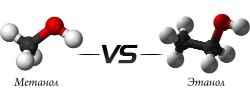 For example, their presence in essential oils of plants gives the latter a characteristic odor, and tetracyclic alcohols, an example of which is cholesterol, are an active factor in metabolic processes in animals and humans. Some vitamins (A and D) are also alcohols.
For example, their presence in essential oils of plants gives the latter a characteristic odor, and tetracyclic alcohols, an example of which is cholesterol, are an active factor in metabolic processes in animals and humans. Some vitamins (A and D) are also alcohols.
Ethanol (as well as methanol, which is deadly to humans) belongs to the category of lower alcohols from the point of view of physiology. Both are present in nature.
Methanol - or wood alcohol – was first discovered in the West by "distilling" wood in the 18th century.
Methods of obtaining ethanol from the fermentation products of cereals and berries were known to mankind as early as the 7000 millennium BC. In the Henan province of China, evidence of people's fascination with intoxicating drinks dating back to the Early Neolithic era was discovered: artifacts of the production of fermented mixtures of grapes, rice and honey.
Related videos
We recommend watching this video:
Conclusion
In the holy book of Muslims back in the 7th century, it was said that there is some benefit in wine, but there is still more harm from it. It is this truth that is confirmed by the history of the invention and use of intoxicating drinks. The rule of the "golden mean" in the case of alcohol should be renamed the axiom of the "golden minimum". Alcoholic beverages are the things that help the least in life, except when there is nothing else at hand.



